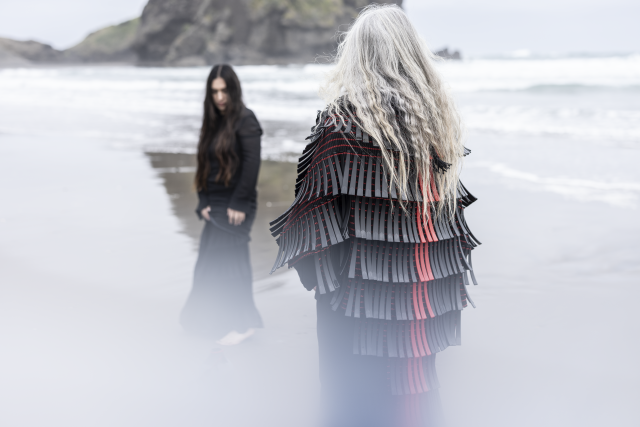The 2024 Rakow Commission from The Corning Museum of Glass has been awarded for the first time to an artist from New Zealand. Te Rōngō Kirkwood, a mixed-media glass artist, is also the first indigenous Māori artist to be selected for this prestigious commission to make a work for the Corning permanent collection. Her pieces, made with both blown and fused glass in addition to other materials, bring the vibrancy and power of Māori culture to New York State this fall.
The Rakow Commission is a financial award presented by the Corning Museum of Glass each year since 1986. Its express purpose is to allow glass artists to create without limitation. Tami Landis, the Corning Museum’s Curator of Postwar and Contemporary Glass, told the Glass Quarterly Hot Sheet that the museum does not instruct or direct the artist on what to make, instead allowing them freedom of expression throughout the full process. One of the Corning Museum’s requirements is that the chosen artist cannot already be represented in the Museum’s permanent collection, ensuring protection of newer artists and diversity in the artist pool. This year’s recipient is the 38th to receive this commission.
Te Rōngō Kirkwood is an artist of Scottish, English and Māori heritage who was born and raised in Aotearoa. She is primarily known for her culturally inspired, wearable pieces made by cold-working glass and combining it with a variety of materials including fiber, wood and steel. Through the creation of these artworks, she expresses her connection to her past, through her Māori ancestors and their living history, as well as her vision of the future, through her use of non-traditional materials and unique artistic approach.
The installation created by Kirkwood with the Rakow Commission is known as The Seer, the Seen, the Seeing. It involves two glass pieces featured as part of a multi-media experience, on view at Corning Museum of Glass in Corning, NY starting November 14, 2024. The first item is a kākahu, or cloak, made of glass and woven fiber. The second is a Puru hau, or ceremonial vessel, made of blown glass. Both are used in a short film starring Kirkwood and her father where they stand on Piha beach and engage in the ritual of passing down these objects from generation to generation. In the full installation at Corning, the film screen is framed by the cloak above and the beach’s black sand below.
Kirkwood has created several of these beautifully formed cloaks in the past. She typically photographs these hanging, or worn by a model. However, this project introduces two firsts in Kirkwood’s glass journey. The film depicting Kirkwood and her father exchanging the kākahu is her first film, introducing the audience to the sound and movement of the glass as it it inhabits an artistic space. Kirkwood’s presence in the film is also her first time wearing one of her own works in a professional display.
The experience of The Seer, the Seen, the Seeing is one that aims to present the artwork to the audience so completely that each individual can come away with a different understanding. The multi-media approach interacts with several of the viewer’s senses at once and allows them to be a part of an intimate moment as Kirkwood accepts her father’s legacy with solemnity and vision. After the initial unveiling, the creation will enter the permanent collection, and remain a part of the Corning Museum’s glass display.




